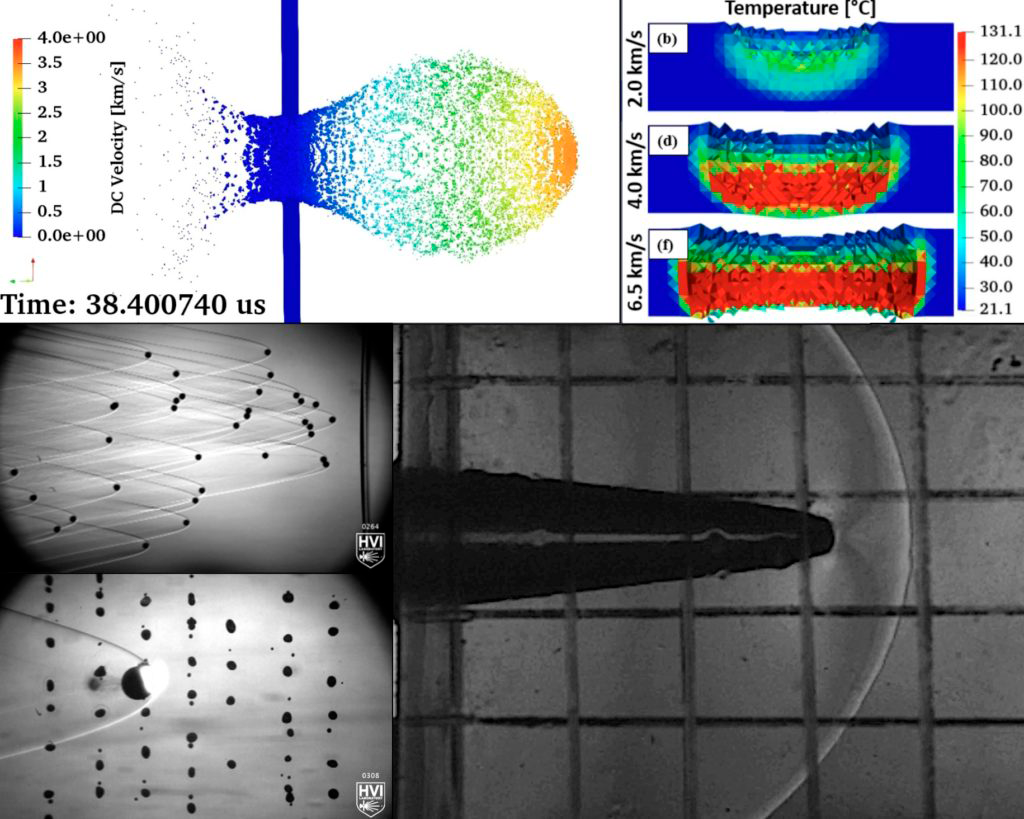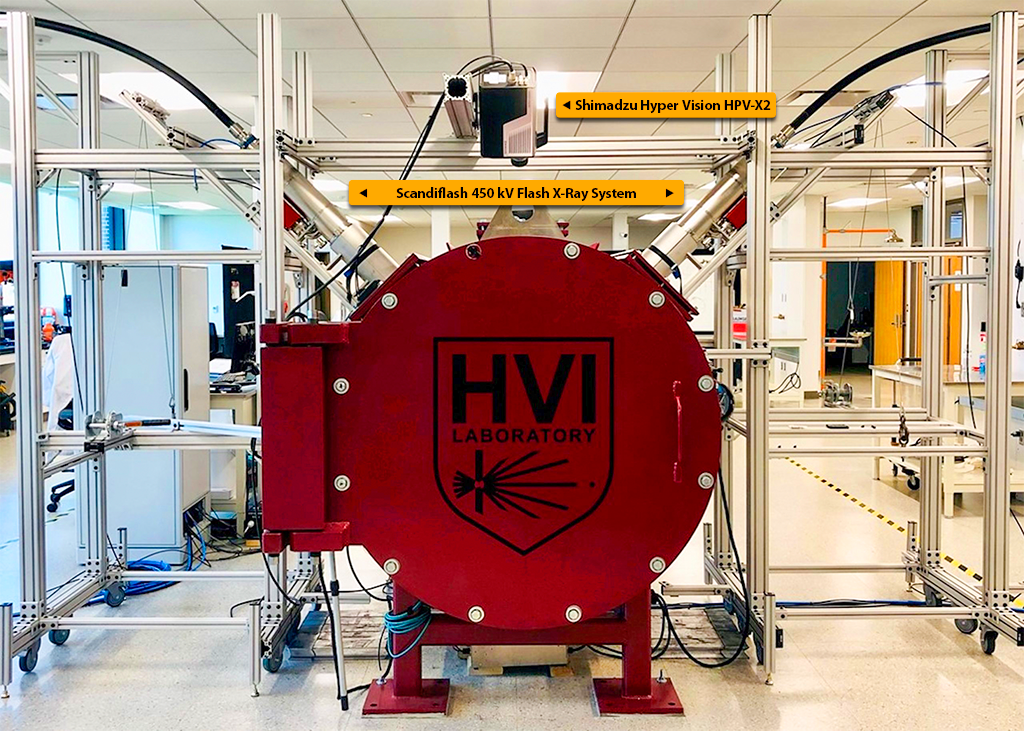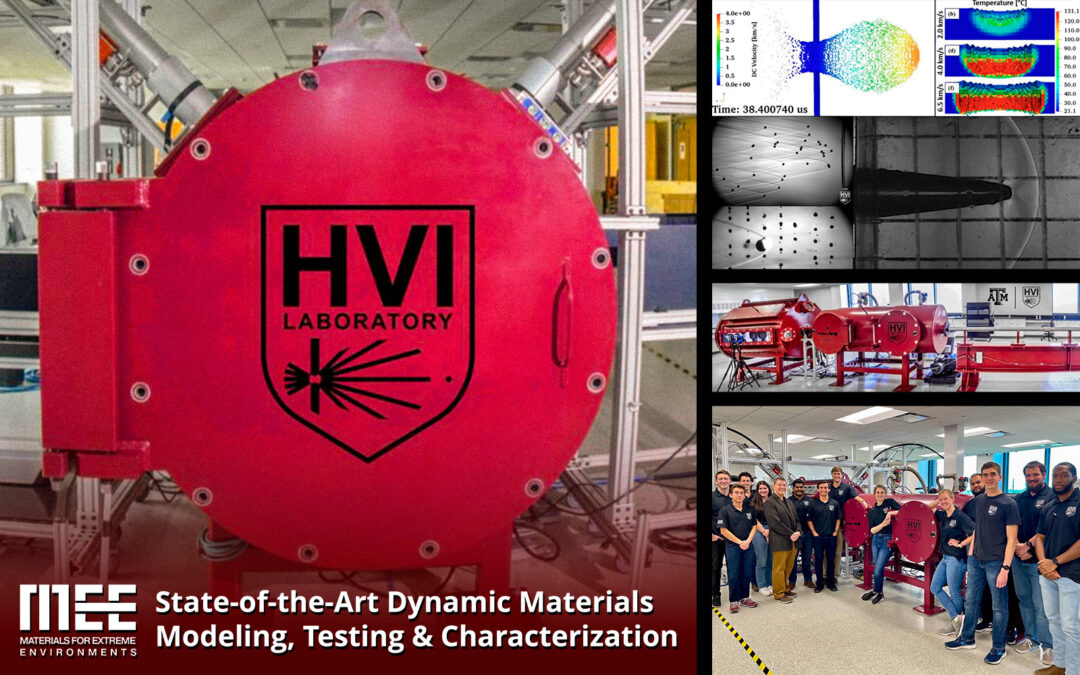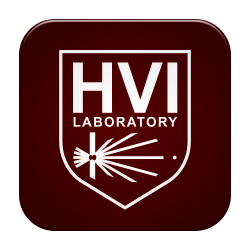MEE – Materials for Extreme Environments, State-of-the-Art Dynamic Materials Modeling, Testing & Characterization
College Station, TX – The Materials for Extreme Environments (MEE) group at Texas A&M University tackles many challenging dynamic research problems. Current research projects include studying the effects of hypervelocity impacts to many hard and soft materials, designing unique material structures to mitigate such impacts, and developing and validating high-fidelity, novel computational materials models to predict high-rate phenomena.

Results from various testing at MEE.
The Materials for Extreme Environments (MEE) group is comprised of preeminent experts in several technical areas, including high strain-rate and high energy damage mechanics, multiscale computational materials modeling, and optical diagnostics. Our experience enables the development and implementation of state-of-the-art experimental and computational capabilities at scales ranging from nano to structural. These capabilities are currently being employed to solve some of the most challenging engineering problems facing organizations such as the Department of Defense (DoD) and the National Aeronautics and Space Administration (NASA).
The MEE team currently includes five tenure-track faculty members, a research engineer, ten graduate students (nine doctoral and one master’s), and eleven undergraduate students.

Two-stage light gas gun (2SLGG) at HVIL.
Hypervelocity Impact Laboratory (HVIL)
Texas A&M University is home to the state-of-the-art Hypervelocity Impact Laboratory (HVIL) located at the Center for Infrastructure Renewal (CIR) on the RELLIS campus. The HVIL houses a modern two-stage light gas gun (2SLGG) that serves as our flagship high-rate testing instrument. The lab is equipped with modern, cutting-edge diagnostic instruments that allow for in-situ characterization.

HVI Laboratory with Shimadzu HPV-X2 & Scandiflash 450 kV Flash X-Ray System.
About Texas A&M University Hypervelocity Impact Laboratory
The Texas A&M University (TAMU) Hypervelocity Impact Laboratory (HVIL) is located at the Center for Infrastructure Renewal (CIR) at RELLIS campus of The Texas A&M University. The laboratory research is aimed at enabling unique high-rate materials characterization and multiscale numerical model development and implementation. The TAMU HVIL, operated by a team of distinguished researchers, provides a testbed for the development and tailoring of novel monolithic, layered, and architected structures comprised of polymers, composites, metals, ceramics, soft materials, gels, and geomaterials to mitigate HVI threats (e.g., hypersonic weapons, micrometeoroid/orbital debris, atmospheric reentry conditions).
The laboratory currently houses a state-of-the-art two-stage light gas gun (2SLGG) capable of launching 0.8-12.7 mm diameter projectiles at velocities in the range of 1.5-8.0 km/s (3,355-18,000 miles/hr). Projectile materials currently include steel, aluminum, nylon, glass, polycarbonate, tungsten, and titanium. The modern and advanced facility at HVIL allows for targets of many sizes, shapes, and weights to be impacted efficiently and reliably at normal and oblique orientations. A brief description of the 2SLGG can be found here.
The 2SLGG is currently equipped with a pair of laser intervalometers, a Shimadzu Hyper Vision HPV-X2 ultra high-speed video camera, a Scandiflash dual-head 450 kV Flash X-ray system, high-speed Schlieren imaging, and novel particle tracking technology. Ongoing developments include advanced digital in-line holography diagnostics and modern target heating/cooling techniques. Future diagnostic equipment will include an additional high-speed camera(s), high-speed thermal camera(s), and a photon doppler velocimetry (PDV) system.
Learn more about the Shimadzu Hyper Vision HPV-X2 ultra high-speed video camera and Scandiflash Flash X-Ray System featured in this post on our website or contact a Hadland Imaging representative to discuss in greater detail.



